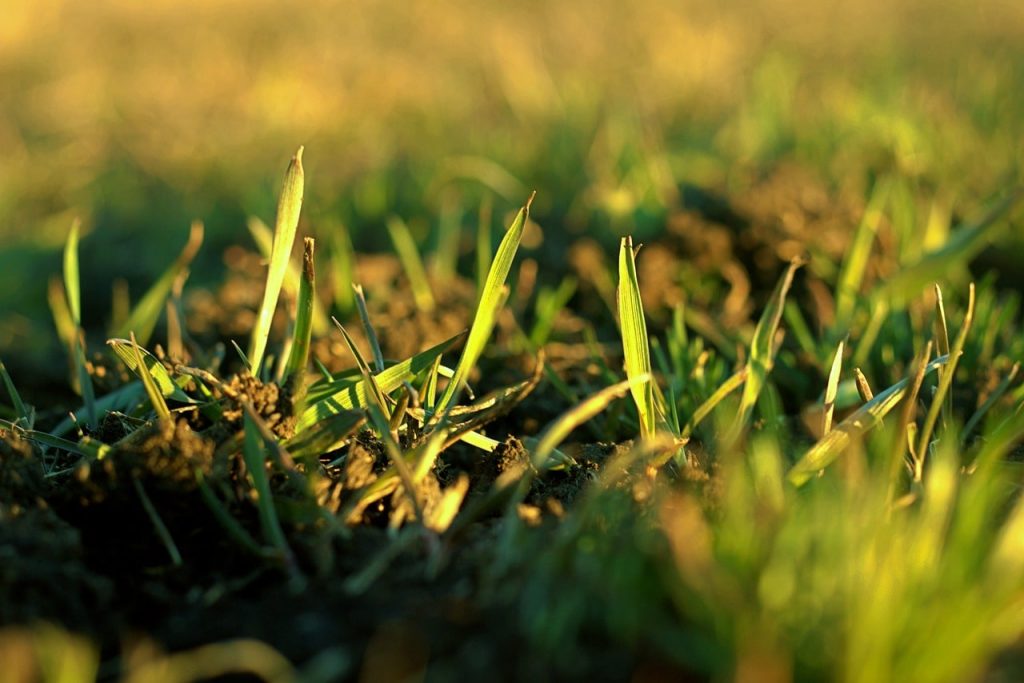Do you have bare patches on your lawn, or corners of your garden that you’d like your grass to grow?
In this guide, we’ve explained how grass spreads, and what you can do to accelerate this process.
How grass spreads

Grass spreads in one of two ways:
- Dropping seeds. Just like many other plants, grass produces seeds, which can spread in the wind. However, most grasses need to grow very tall to develop seed heads, and the seeds they do produce may be sterile.
- Spreading via runners, known as rhizomes (underground) or stolons (above ground). Most cool season grasses that we get in the UK spread using this method.
Rhizomes are essentially like a root that shoots out parallel to the surface, and grows up, to create an entirely new grass plant. Stolons work in much the same way, except they grow above the ground, and then form a new bud at the end, which roots into the soil, to produce a new grass plant.
Different varieties of grass spread at different rates. And the exact species of grass you have on your lawn will also affect how much it spreads. For example, if your grass comes from a hybrid seed mix, the seeds your lawn produces may not grow once they hit the ground.
How to make grass spread faster
There are a few different ways to help encourage your grass to spread more quickly. Each of these methods encourages your lawn to grow healthier, and to focus on lateral growth.
Mow the lawn regularly, but not too short
Mowing your lawn to make it spread faster may seem counter-intuitive, since you’re preventing the lawn from growing tall enough to develop seed heads.
However, cutting your grass, and taking no more than a third off its height, helps to make it healthier, while also encouraging the lawn to focus on lateral growth. This is especially true if you mulch your grass clippings, leaving valuable nutrients in place as the cuttings decompose.
Just ensure that you leave the grass at least two inches tall, to prevent scalping it. Also, try to mow the lawn frequently, and take less off of it each time. This is especially important when mulching your clippings, to ensure that you don’t add too much mulch at any one time.
Feed your lawn

Apart from leaving your grass clippings in place, you can also feed your lawn to help it grow stronger. This is especially likely to be helpful if your lawn is feeling a little neglected.
You could try to top dress the lawn with a layer of organic fertiliser, to provide it with valuable nutrients. Or, you could use compost, if you have a compost bin in your garden.
Scarify your lawn
If you have too much thatch on your grass, which is a layer of dead organic matter around the stems of your grass, this could be starving it of air and light, preventing it from growing outwards as fast as it should.
In this case, scarifying your lawn could help to encourage the grass to spread faster. If you use a proper scarifier, you can also cut your lawn’s stolons, helping to encourage lateral growth.
To tell if you have too much thatch, get on your hands and knees and inspect the area between the soil and the tops of your grass blades. If there is more than half an inch of dead organic matter in and around the grass stems, then dethatching your lawn might be a good idea.
Is it a bad idea to let your grass seed?
Rather than mowing your lawn to encourage it to spread, you might be considering doing the opposite – letting it grow tall, so that your grass begins to produce more seeds.
This is generally not recommended for the following reasons:
- Most cool season grasses primarily spread using rhizomes or stolons, rather than with seeds, although there are some exceptions.
- To get your grass to grow proper seed heads, you will likely have to let it grow 10cm tall, or taller.
- Once the grass gets extremely tall, it will be very difficult to mow, not to mention unsightly.
- The seeds that your grass produces may not grow once they spread. The types of grass seeds sold for growing lawns are bred to grow well, but the seeds that these plants then produce may be sterile, meaning they won’t grow at all (or very few of them will).
Will grass spread to cover bare spots?

Your grass might eventually spread to cover bare spots, especially if it’s healthy, and you give it a few months. However, it can be a very slow process, especially with cool season grasses.
Instead, it’s typically a better idea to sow some seeds to cover any bare spots. This will help to fill in the bare patches much more quickly.
The issue with spreading seeds is unless you find the right seed mix, your lawn might look a slightly different colour in some places.
To get around this issue, you can also dig up a piece of turf from elsewhere on your lawn, and transplant it over the bare patch or patches. However, in doing this, you’re relying on the grass continuing to grow and spreading itself out, which may only happen very slowly.
Therefore, spreading seeds is best if you know that your lawn doesn’t like to spread very quickly.
To learn more, read our guide to fixing bare patches on your lawn.

I’m Josh, and I’m the head writer at Lawn Care Pro.
I love everything lawns, but I’m a bit of a lawn mower nerd. I spend a lot of my free time tinkering with mowers, and planning my mowing schedule for the next few weeks.
I’m also into cars, which comes in very helpful when servicing a mower engine!




